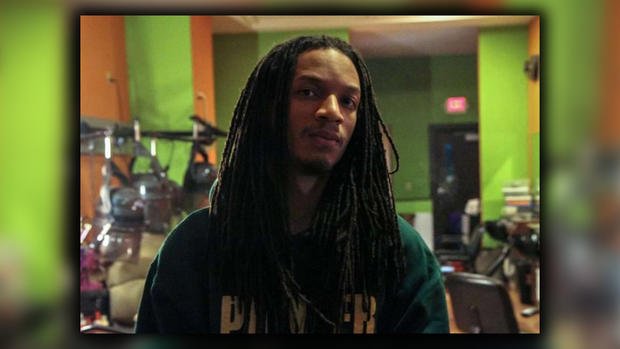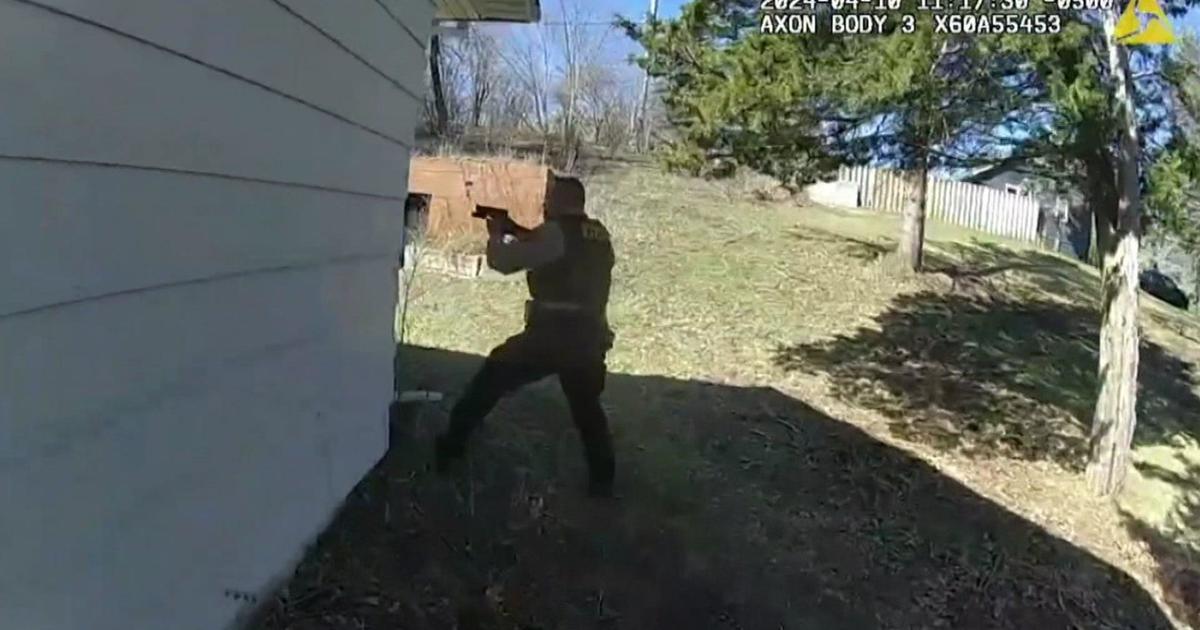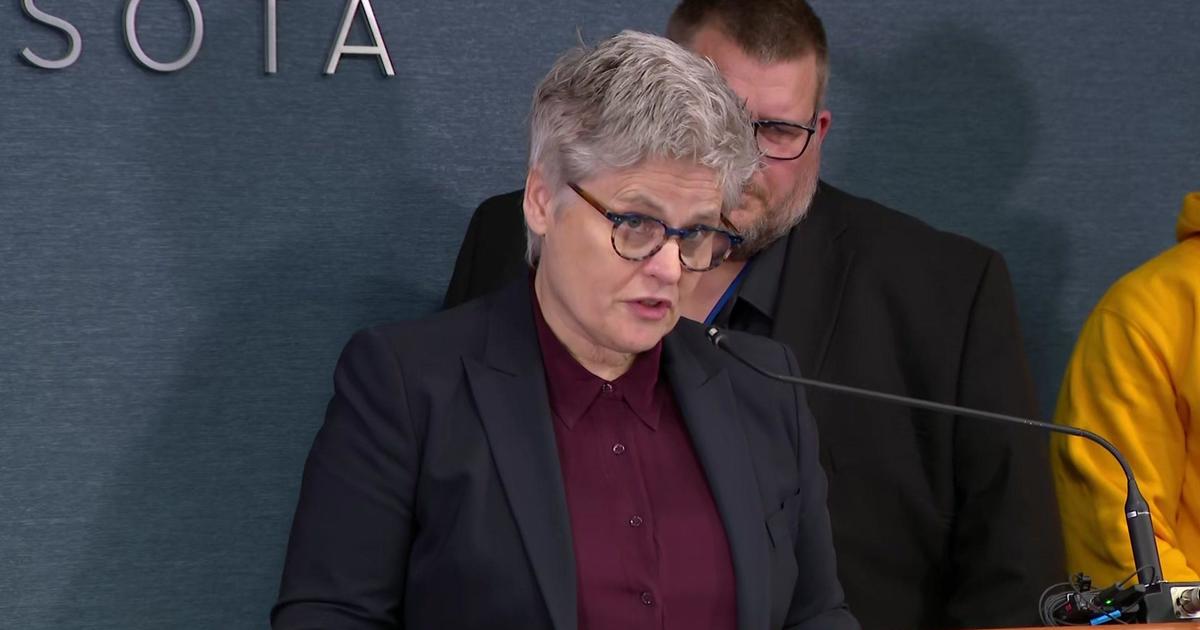No Charges Filed In US Marshal Task Force's Fatal Shooting Of Winston Smith In Uptown
MINNEAPOLIS (WCCO) -- Officials say there will be no charges filed against the task force members who fatally shot Winston Smith in June atop a Minneapolis parking ramp.
On Monday, officials announced that the Crow Wing County Attorney's Office had determined that the U.S. Marshal Task Force's use of deadly force was lawful and "no criminal prosecution should be sought in this matter."
Crow Wing County Attorney Donald Ryan last month said he was reviewing the case because counties closer to the Twin Cities had conflicts. Ryan sent his findings to the Hennepin County Attorney's Office on Oct. 6. Hennepin County released those findings Monday.
On June 3, a federal task force made up of deputies from several Minnesota law enforcement agencies and U.S. Marshals confronted Smith at the top of a parking ramp on Lake Street in the Uptown neighborhood.
Shortly following the shooting, the Minnesota Bureau of Criminal Apprehension said evidence indicated that Smith, a Black man, fired his gun before members of a U.S. Marshals Service Fugitive Task Force shot and killed him. Authorities said Smith was wanted on a warrant for being a felon in possession of a gun.
Officials said a Hennepin County deputy and a Ramsey County deputy -- who were deputized as federal agents while working on the task force -- fired at Smith. The BCA said it cannot release the identity of the deputies because they were working undercover.
Task force members performed life-saving measures on Smith, but he was declared dead at the scene. The Hennepin County Medical Examiner's Office said Smith died of multiple gunshot wounds.
Crow Wing Co. Attorney: Smith 'Initiated A Deadly Force Confrontation'
According to the Crow Wing County Attorney's Office's review of the case, the task force was "readily identifiable" when they informed Smith that he was under arrest and commanded him to get out of his vehicle, among other commands. The review determined that Smith "failed to comply with lawful orders" and "initiated a deadly force confrontation" as the task force was attempting to gain entrance into his vehicle.
The review said the task force was attempting to break the window and remove Smith, and that's when Smith allegedly reached for something in the back seat. When Smith sat back into the driver's seat, a task force member yelled that Smith had a gun and then fired at Smith. Another task force member, who was attempting to break the window, dropped the window breaking tool and fired at Smith.
"Though I am unable to determine who fired first, it is irrelevant in this case," Ryan said in the review. "Once an individual initiates a deadly force confrontation, a law enforcement officer does not have to wait to be shot/shot at before reacting."
Therefore, Ryan said the the response from the task force members was "reasonable and justified."
Search warrant affidavits filed in Hennepin County District Court show that 15 cartridge casings from police firearms were found outside of the SUV in which Smith was sitting and six cartridge casings from another gun were found inside.
According to one affidavit, a Smith and Wesson M&P 380 pistol was also recovered from the driver's side of the SUV and the six casings found inside matched the pistol. Following the shooting, the BCA said a handgun and spent cartridge cases were found inside the driver's area.
Attorneys for an unidentified woman who was in the SUV with Smith said that she never saw him with a weapon. She said that he was raising his cellphone when law enforcement started shooting.
Questions Raised From Ryan's Report
In the shorter summary of Ryan's charging decision, he says Smith drew his handgun and shot at the officers, but the more-detailed narrative doesn't mention Smith firing. When asked about the inconsistency, Ryan's office had no comment.
The report says one of the two officers who fired saw Smith pull a gun. The other did not. It also says the woman in the car with Smith during the shooting was seen on body camera "immediately after the incident," even though the BCA says task force officers weren't using cameras.
According to the report, the woman said Smith told her during the incident he didn't want to go back to jail and that he was going to die.
Ryan's office had no comment when we asked how such a detailed narrative was compiled without body camera video from the task force.
The BCA will release the case file of evidence that Ryan relied upon to make his decision.
The Body Camera Dilemma
In its news release about the shooting, the BCA said there is no video from body cameras or squad car video because the U.S. Marshal Service "currently does not allow" the use of body cameras for officers serving on the task force -- also known as the North Star Fugitive Task Force.
However, the U.S. Department of Justice changed that policy more than six months before the shooting and allows local law enforcement on federal task forces to "activate a body-worn camera while serving arrest warrants, or during other planned arrest operations, and during the execution of search warrants."
Ramsey County Sheriff Bob Fletcher sent out a statement that the U.S. Marshals Service has been "misleading" in its comments in the media concerning body cameras.
"In Minnesota, the Marshals office has refused to allow us to wear body cameras since the advent of the technology and any new policy has not been implemented," Fletcher said on June 8.
Fletcher and Hennepin County Sheriff David P. Hutchinson pulled their deputies from the task force until the policy requiring body cameras is fully implemented.
Smith's death was the latest in several fatal encounters between Black men and law enforcement. The incident led to days of protests in the neighborhood, with demands of transparency coming from his family members and community members.
The intersection where Smith died -- Lake Street at Girard Avenue -- was closed off for weeks due to protests and gatherings, but reopened later in June.
The reopening of that intersection also coincided with the reopening of East 38th Street and Chicago Avenue, which is the intersection where George Floyd was killed by now-former Minneapolis police officer Derek Chauvin in May 2020.
Floyd, a Black man, died after Chauvin, who is white, pressed his knee against Floyd's neck for about nine minutes, holding his position even after Floyd went limp as he was handcuffed and lying on his stomach.
Floyd's death sparked sometimes violent protests in Minneapolis and beyond, and led to a nationwide reckoning on race. Chauvin was later convicted for murdering Floyd.





